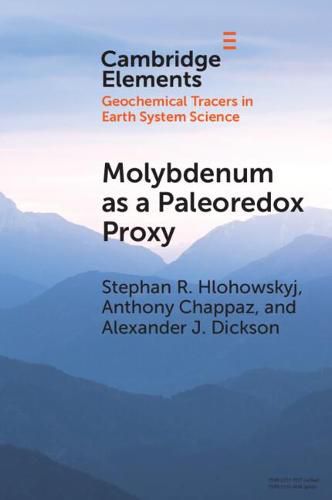Readings Newsletter
Become a Readings Member to make your shopping experience even easier.
Sign in or sign up for free!
You’re not far away from qualifying for FREE standard shipping within Australia
You’ve qualified for FREE standard shipping within Australia
The cart is loading…






Molybdenum (Mo) is a widely used trace metal for investigating redox conditions. However, unanswered questions remain that concentration and bulk isotopic analysis cannot specially answer. Improvements can be made by combining new geochemical techniques to traditional methods of Mo analysis. In this Element, we propose a refinement of Mo geochemistry within aquatic systems, ancient rocks, and modern sediments through molecular geochemistry (systematically combining concentration, isotope ratio, elemental mapping, and speciation analyses). Specifically, to intermediate sulfide concentrations governing Mo behavior below the ‘switch-point’ and dominant sequestration pathways in low oxygen conditions. The aim of this work is to 1) aid and improve the breadth of Mo paleoproxy interpretations by considering Mo speciation and 2) address outstanding research gaps concerning Mo systematics (cycling, partitioning, sequestration, etc.). The Mo paleoproxy has potential to solve ever complex research questions. By using molecular geochemical recommendations, improved Mo paleoproxy interpretations and reconstruction can be achieved.
$9.00 standard shipping within Australia
FREE standard shipping within Australia for orders over $100.00
Express & International shipping calculated at checkout
Molybdenum (Mo) is a widely used trace metal for investigating redox conditions. However, unanswered questions remain that concentration and bulk isotopic analysis cannot specially answer. Improvements can be made by combining new geochemical techniques to traditional methods of Mo analysis. In this Element, we propose a refinement of Mo geochemistry within aquatic systems, ancient rocks, and modern sediments through molecular geochemistry (systematically combining concentration, isotope ratio, elemental mapping, and speciation analyses). Specifically, to intermediate sulfide concentrations governing Mo behavior below the ‘switch-point’ and dominant sequestration pathways in low oxygen conditions. The aim of this work is to 1) aid and improve the breadth of Mo paleoproxy interpretations by considering Mo speciation and 2) address outstanding research gaps concerning Mo systematics (cycling, partitioning, sequestration, etc.). The Mo paleoproxy has potential to solve ever complex research questions. By using molecular geochemical recommendations, improved Mo paleoproxy interpretations and reconstruction can be achieved.